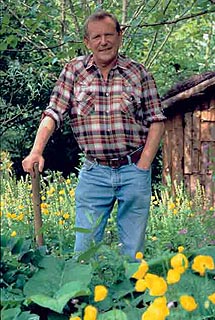 May – those darling buds bursting out everywhere and there is so much to do and so much to write about I am not sure where to start!! This month there is no space to relate local stories or tell amusing tales, the hard work is now in progress and we need a more serious and scientific start to the real gardening season.
May – those darling buds bursting out everywhere and there is so much to do and so much to write about I am not sure where to start!! This month there is no space to relate local stories or tell amusing tales, the hard work is now in progress and we need a more serious and scientific start to the real gardening season.
Bedding plants – I have been planting up tubs and baskets for peoples for 6 weeks now, keeping them warm and growing on in the poly tunnels and soon they will be going outside for the day time to start hardening off what can be sappy growth when it is so well protected. I always think of that great gardener, Geoff Hamilton at this time of year because I am not a great bedding fan, but he was. Yes, I have some in pots and baskets and frittered around the garden filling up spaces, but I do wonder about the money spent on bedding when for the same price you could buy an herbaceous perennial that will last for years and double in size for splitting each season. Hey ho, each to his own. Geoff said ‘There’s a sensitive school of design that claims that bedding is brash and gaudy while devotees hold that no other group of plants gives so much joy all summer long. Thank goodness we all have different tastes.’
Whatever your feelings if you’re going with bedding do not be tempted to plant out before the end of May. You gain nothing by being early. Cold evenings and windy weather will check the growth and may damage young foliage. Also check where you are going to put bedding. Most summer bedding likes the sunshine but if you have shade or partial shade then, lobelia, fuchsias and mimulus will be very happy there. And don’t forget the borders for annuals like cosmos (germinates from seed in a week) annual delphiniums and nicotiana, tobacco plants. Once planted they must be fed if they are in limited compost in pots or baskets.
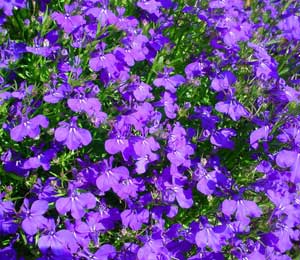 Proprietary plant foods are available and will be advertised endlessly on TV this month, but take my advice and use tomato food for all your bedding, the added magnesium helps enormously and tomato food is much cheaper than the brassy labelled stuff. Often you will need to water twice a day and you must remove the dead heads to prolong flowering. Bedding plants are hard work to keep at their best so don’t enter into it lightly! Avoid busy lizzies this year. They all have a virus which killed off so many early last year. Only the large New Guinea varieties are immune.
Proprietary plant foods are available and will be advertised endlessly on TV this month, but take my advice and use tomato food for all your bedding, the added magnesium helps enormously and tomato food is much cheaper than the brassy labelled stuff. Often you will need to water twice a day and you must remove the dead heads to prolong flowering. Bedding plants are hard work to keep at their best so don’t enter into it lightly! Avoid busy lizzies this year. They all have a virus which killed off so many early last year. Only the large New Guinea varieties are immune.
Dahlias- That wonderful plant that comes in so many shapes sizes and colours and for so long fell out of favour with the gardening fashionista. Oh but not with me! These guys come from Mexico, the land of the sombrero and chilli pepper and they are flamboyant and so long lasting. Dormant tubers can be planted now, remember they are susceptible to frost and I lost some that I left in the ground last winter though here I normally wouldn’t. Give the ground a good dig over and a good dressing compost or manure water them in and stake the taller varieties as they come through. If you want enormous blooms for the Show then you will have to remove side buds to let the main stem develop. But if like me you would rather have loads of bloom then remove the central stem bud and let the side shoots bush out.
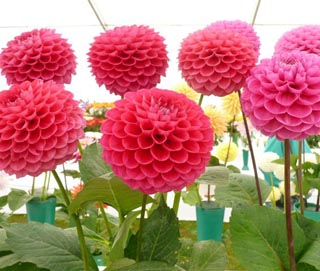 Herbaceous plants – Tall perennials like the poppies and delphiniums and verbenas need staking as they come through whilst you can still see the emerging growth. Its well worth the time invested now. Don’t tie them too tight or they look unnatural and use pea sticks or narrow branches from shrubs. The plant supports you can buy are ok but look ugly until the plant grows through.
Herbaceous plants – Tall perennials like the poppies and delphiniums and verbenas need staking as they come through whilst you can still see the emerging growth. Its well worth the time invested now. Don’t tie them too tight or they look unnatural and use pea sticks or narrow branches from shrubs. The plant supports you can buy are ok but look ugly until the plant grows through.
Daffodils – Surprised I mention these in May? Bet you’d forgotten about them. Don’t cut them down until they are dead and then feed them so the bulbs develop for next year. You need a feed high in potash and rose or tomato food will do the job. If you are moving daffs from a pot to the ground then drench them with water and food as you move them.
Chrysanthemums – Most of soils are on the acid side of neutral and chrysan
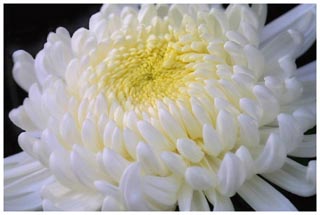
ths like more alkali conditions. So if you have had problems growing them this is usually the reason why. Add a little lime to the soil and mix it in well. If you are growing them for cut flowers ‘stop’ the plant by pinching out the growing tip and then they will branch out as described for the dahlias above. Spray varieties should not be disbudded, they will ‘spray’ automatically.
Tomatoes and cucumbers – should be growing strongly now. Start feeding as the first truss forms and pinch out the side shoots or the plants become unruly and produce less. Do the pinching out of side shoots first thing in the morning if you can, before the sap is rising quickly.
Broad beans – Watch out for black fly which will ruin your crop and make picking quite unpleasant. The fly will attack the soft growing tip and you can discourage it by pinching out the tip as soon as the lowest pods have set.
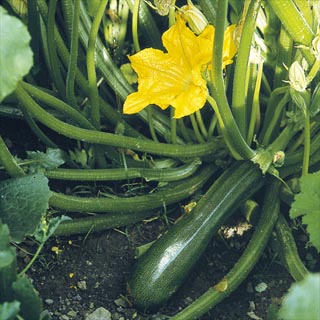
Runner and French beans – I neve
r plant my seed for these until early May. There are plenty of other jobs to be doing. I put the seed in pots bring it on in the tunnels, harden the plants off slowly outside and then plant out towards the end of May. There is nothing worse than a plant destroyed by cold wind that has been planted out too early. Seed can be planted directly into the ground this month too, but put two seeds either side of a pole to ensure at least one germinates.
Courgette – plants can go out as soon as you are happy that the worst of the coldest weather is over. If you don’t have plants it is not too late to start from seed.
Did I mention feeding the lawn and taking soft cuttings from plants now? No? If you have time great, but if not at least make time to file your nails – you’re going to need them for all that pinching out!
A plea, please think carefully before you cut a hedge in Spring. I saw a nesting family of blackbirds evicted from their nest by a thoughtless individual cutting a hedge in mid April. Let them fledge, your hedge will wait.
